Along the road leading to Isfahan sits Kashan, a peaceful oasis city near the Dasht-e-Kavir desert. The old town’s architecture adapts to the arid environment. Winding streets are covered with arches and tall brick or clay walls that cast shadows surrounding the homes. One of the attractions is the magnificent old private houses.
Most sights are easily accessible by foot. The Golabgiri rose festival is held nearby and should not be missed if you visit Kashan between mid-May and mid-June. This comprehensive guide lists the top Kashan tourist attractions and the surrounding area.
1.Abyaneh Village
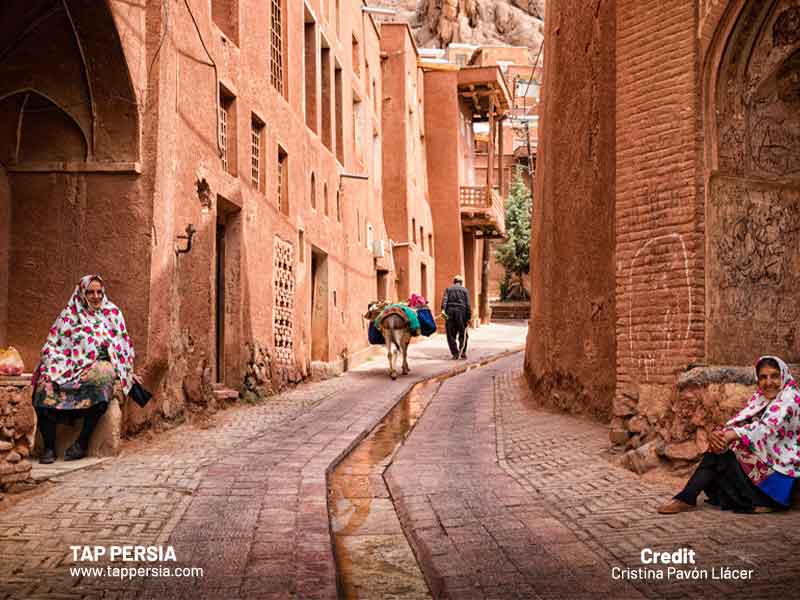
Abyaneh Village is one of the top Kashan tourist attractions. The crimson buildings of the village are what first catch your eye when you enter Abyaneh. In other words, the homes’ exteriors are coated in red dirt. Because of the color of the soil and the opulent design of these residences, Abyaneh is referred to as the “Red Village.” However, because of its elevation of 2222 meters above sea level, this community is regarded as one of Iran’s highest residential areas. The ancient layout of the Red Village is approximately 900 meters long and around 3 meters wide. Abyaneh’s distinctive architecture is only one of its draws, along with the locals’ costumes. Women’s apparel accordingly consists of a colorful garment over a Shaliteh (a kind of skirt), flowery scarves, long stockings, and shoes. Men, on the other hand, dress in long, loose black pants.
Some evidence suggests that the settlement dates back as far as 1500 years. As a result, Abyaneh is among the area’s oldest settlements. As a result, the village contains artwork from the Sassanid, Seljuk, Safavid, and Qajar eras that can attest to the village’s antiquity.
2.Sultan Amir Ahmad Bathhouse
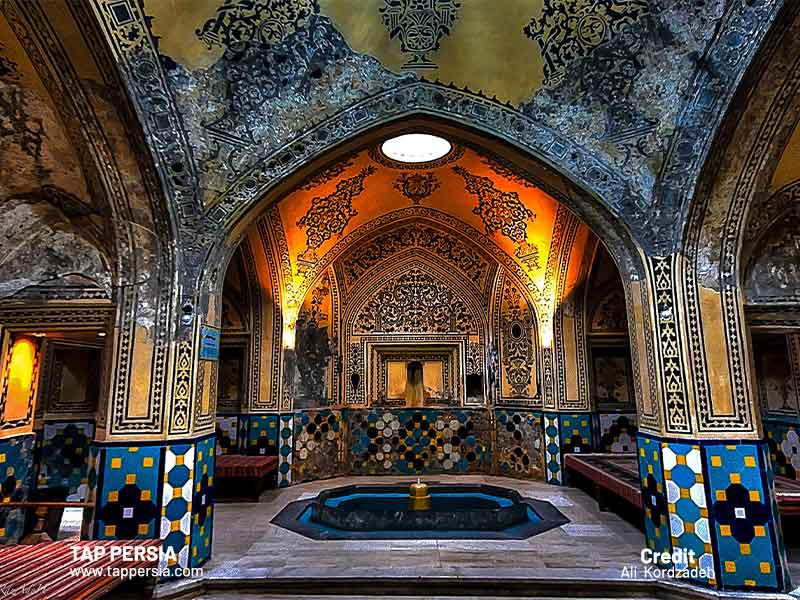
One of the most Kashan tourist attractions is the Sultan Amir Ahmad Bathhouse, commonly known as “Qasemi Bathhouse,” which dates back to the Safavid period in the 16th century. Famous for its exceptional architecture and ornamentation, this antique bathhouse. You will thus like the magnificent plaster-work and blue-and-gold tilework in this antique location. Take your time strolling around the entire structure and ascending to the roof to take in the surreal scenery. where stunning pictures of Kashan’s old quarter can be taken.
3.Kashan Toy Puppet Museum
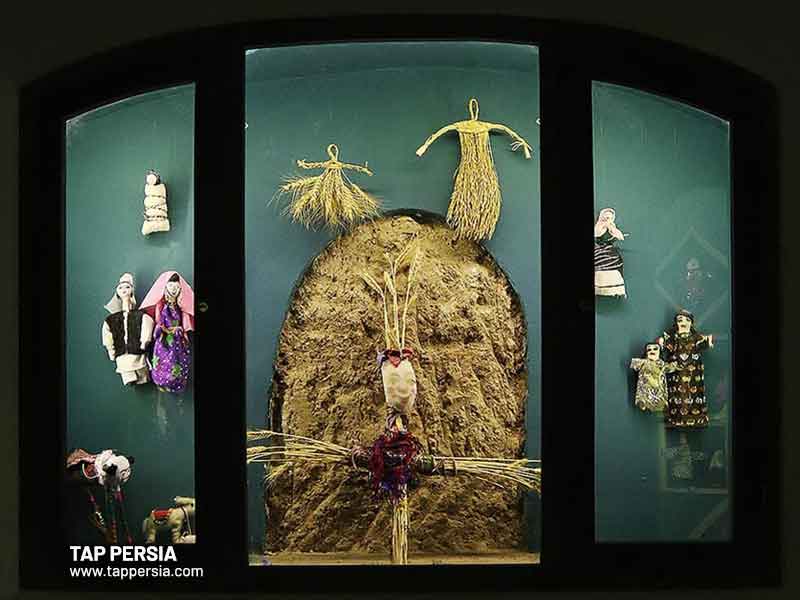
The puppets and toy museum is one of the Kashan tourist attractions to visit for those seeking something distinctive and different. Despite being right outside the Tabatabaei home, this tiny museum is frequently disregarded. The location gives you the story of a variety of traditional puppets from all around Iran in addition to displaying them. Additionally, they hold puppet-making classes during the week in addition to puppet shows on the weekends (Thursday and Friday). You may have a unique, pleasant experience by adding a nice location(Kashan toy poppet museum ) to unwind with some tea and a warm, welcome host. Excellent for both adults and family travelers.
4.Abbasian House
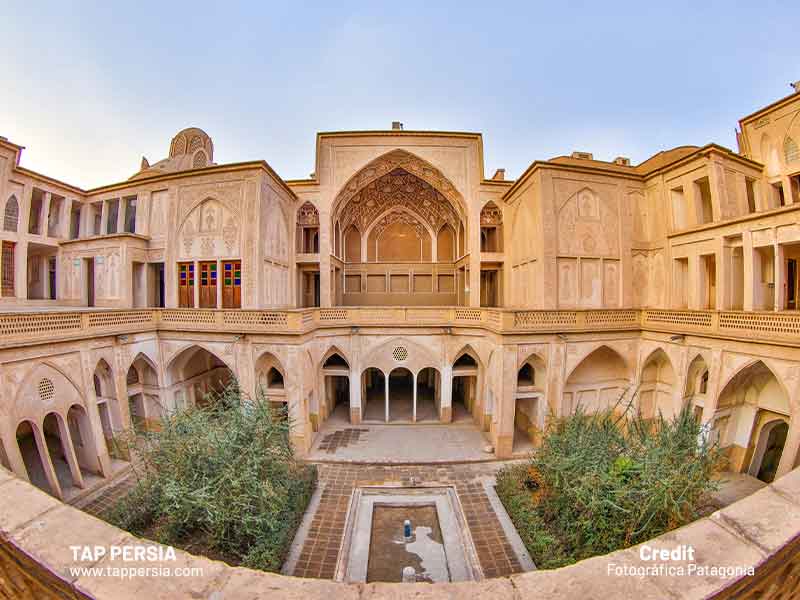
One of the top Kashan tourist attractions, the Abbasi Historical House is a magnificent example of Persian-Islamic architecture. The complex, which has five stories and five yards, was constructed on a plot of land that is more than 5000 square meters large. The house also has ornate stucco reliefs, lattices, sculptures, and mosaic windows. Although the building’s decorations are less elaborate than those of other historic homes, it nonetheless exhibits creative architectural design. Because of this, exploring its rooms and passageways may keep you amused for a long time.
5.Sialk Hills
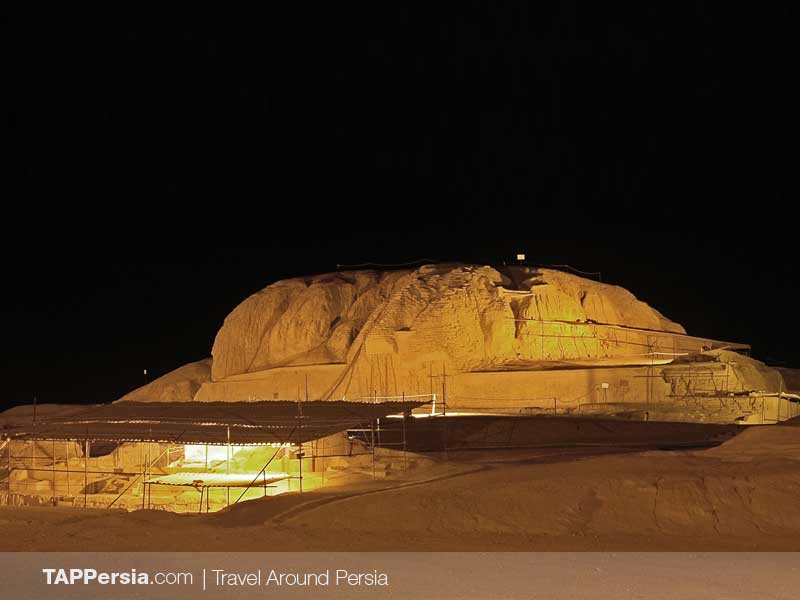
One of the major Kashan tourist attractions is a hill in the southwest of the city known as Sialk Hills, or “Tappeh Sialk” in Persian. Additionally, this location was formerly a famous ziggurat and is now Iran’s most significant archaeological monument. About 90 years ago, renowned French archaeologist Roman Gierschmann found this location.
According to his study, Tappeh Sialk is the oldest of the 32 ziggurats in Iran and Iraq. Furthermore, one of Iran’s earliest ancient human settlements is located on this hill, which is roughly 7,000 years old. Human bones and a variety of ceramics and metal utensils were also found in this site’s artifacts. These relics, which demonstrate Iran’s tens of thousands of years of civilization, are kept in the National Museum of Iran.
6.Steve House
On June 14, 2019, Hossein Farmani founded Steve House in Kashan’s Kohneh Square area, next to the city’s oldest structure. The home opened with a distinctive collection and was given the globally renowned photographer Steve McCurry’s name. Currently, it’s been reported that this gallery won the Mizan Architecture Award and earned a platinum plaque. His work spans more than 50 years and is represented by more than 400 photos. So if you are the artsy type try to check out one of the best Kashan tourist attractions here.
7.Bagh-e Fin Garden
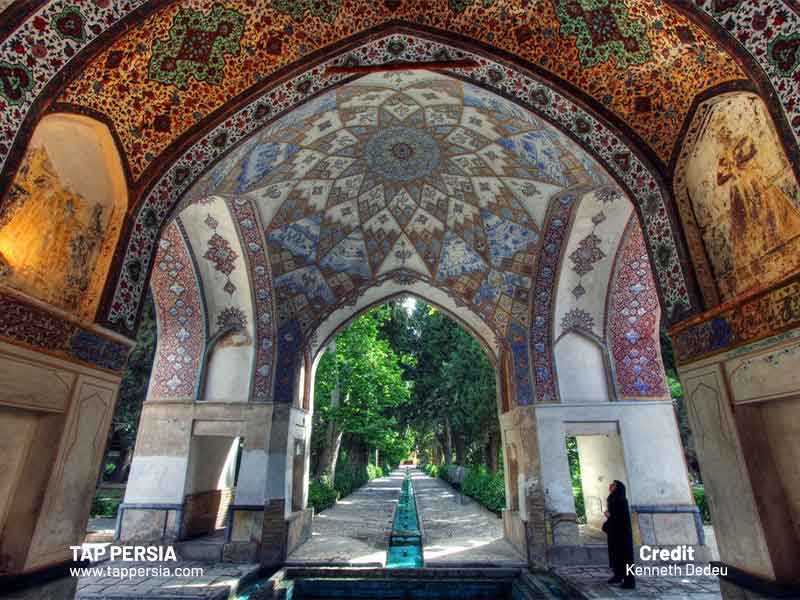
One of Iran’s UNESCO World Heritage Sites is Kashan’s Fin Garden, a stunning and magnificent garden. One of the main Kashan tourist attractions is a garden with towering trees, fountains, and cobblestone floors.
First off, the garden size is around 33700 square meters and is known as Shah “Garden” owing to its regal aspect. Second, Fin Garden is an illustration of an Iranian castle garden because of the walls and towers that surround the central courtyard. It is significant that the occupants’ safety was a consideration while designing this arrangement and concealing the garden behind high walls. The garden’s building date is uncertain; it might have taken place during the Sassanid, Safari, or Albuye eras.
Fin Garden is most well known for a terrible historical incident. In a nutshell, Amir Kabir, a prominent and influential minister of the Qajar dynasty, was killed in the Fin bath.
8.Tabatabaei House
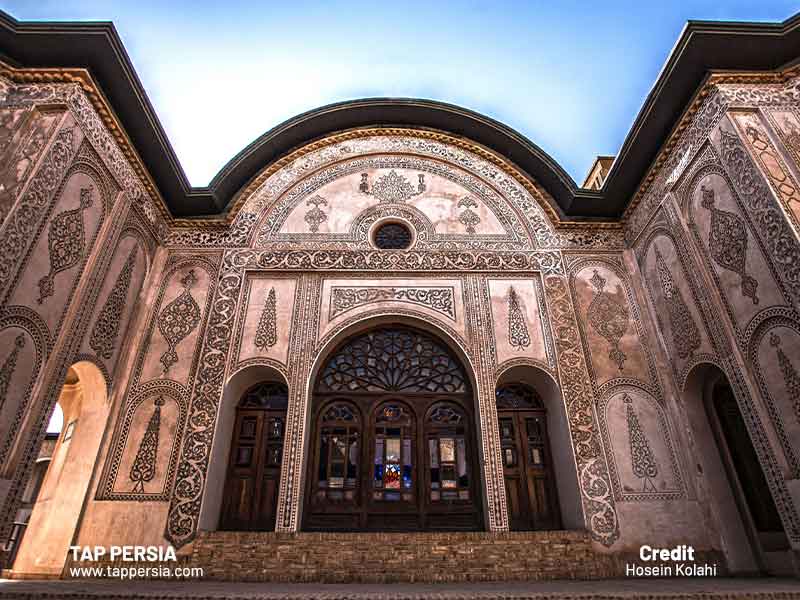
One of the main Kashan tourist attractions, Tabatabai Home is a historical house museum that exhibits the way of life of the Kashan royal family in the late 19th century. This structure, known as “the Bride of Iran,” is also a masterpiece of Iranian ancient architecture that reflects the local culture and environment. In particular, Tabatabai House is a must-see location in Kashan due to its opulent decorations that make use of creative methods including plastering and colored glasswork.
Regarding the home layout, it has a total area of 4730 square meters and is divided into several sections, each of which is constructed in accordance with the demands of its respective occupants. Since the homes were spectacular and roomy, their affluent owners were able to reside there with their entire families and other relatives.
9.Kashan Bazaar
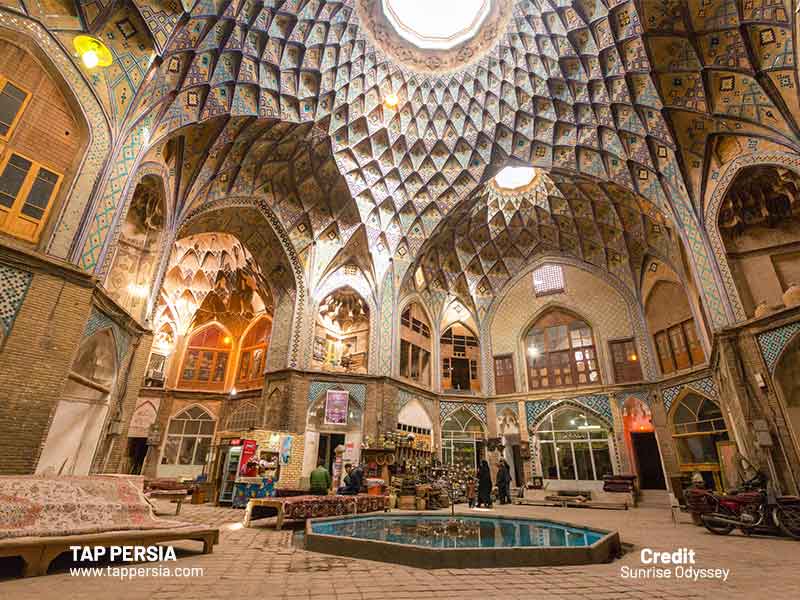
One of the most impressive Kashan tourist attractions is the bazaar, which dates back to the Seljuk and Al-e Buyeh eras. More than 40 ancient landmarks, including Timiche Amin-o-Dowleh, Mianchal Bazaar, Warehouse, Mosque, School, etc., can be found in this market. This bazaar was reconstructed and restored in terms of architecture at the time, and it flourished during the Safavid era. But the majority of what is still there now are artifacts from the Qajar period.
As a result, the Kashan bazaar showcases Iranian architecture over seven centuries. The Timiche Amin-o-Dowleh section, for instance, boasts unrivaled architecture and décor. Aside from its historical significance, Kashan Bazaar is where you can discover vibrant Iran-themed gifts. Don’t forget to check out the exquisitely made Persian rugs, either!
10.Ameriha House
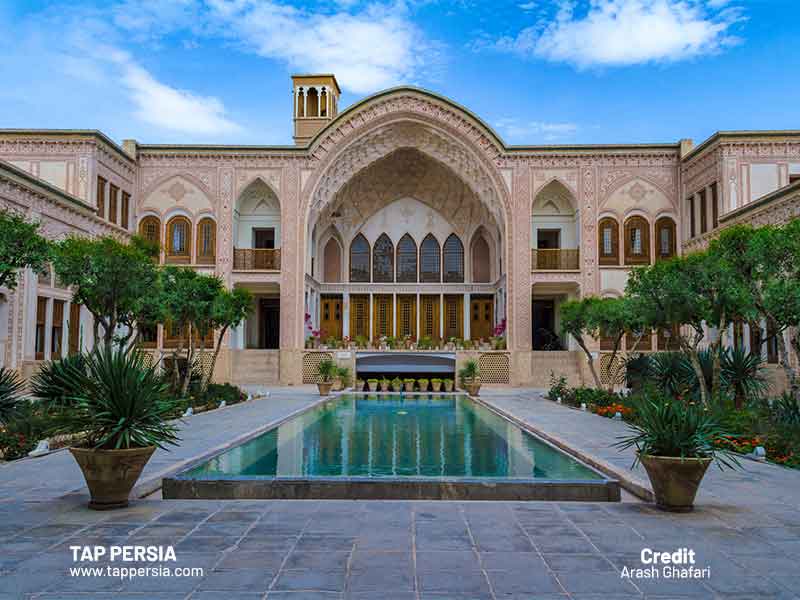
The House of Ameriha is situated in Kashan’s ancient setting. It is one of the popular Kashan tourist attractions. This house’s neighbors include three other spectacular homes. One of Kashan’s oldest and biggest homes, Ameriha was constructed prior to either the earthquake of 1260 AH or the earthquake of 1192 AH (during the reign of Karim Khan) (in the Qajar period). One of Kashan’s grandest historical homes is Ameri House. 85 rooms, seven courtyards, and two bathhouses are all included in its approximately 9 000 square meters of total space.
The Ameri House is divided into two sections, the public (or “birooni”), which is used for visitors and males, and the private (or “andarooni”), which is used by women and servants. Additionally, the home includes a number of three-door chambers and a Shahneshins-style seven-door hall. Among Kashan’s residential buildings, Ameri House’s wind turbines are the tallest.
Thin wooden doors, gypsum reliefs on the façade and ceilings, mirrors, tiles, and paintings were used in the building of the home. Bricks served as the primary structural element. Ponds, porches, gardens, and various flora and shrubs beautify the courtyards.
11.Shahzadeh Ibrahim
An ancestor of the seventh Shi’a Imam is remembered at the tomb known as Imamzadah Ibrahim, often spelled Shahzadah Ibrahim. It is situated in Kashan, Iran, toward Bagh-i Fin on the western boundaries of the contemporary city and is considered as one of the top Kashan tourist attractions. The structure was founded in 1303 AH (1885–1886 CE), according to inscriptions on it, and Khalah Bigum, a woman from the adjacent town of Fin, is listed as its sponsor. A different inscription documents the addition of mirror-work ornaments to the iwan in 1308 AH (1890-1891 CE).
The mausoleum comprises a walled complex that is rectangular in shape. Visitors arrive at its entrance (on the north end) and immediately enter a sizable courtyard with trees. On the other side of the courtyard, a substantial iwan faces the domed tomb chamber. A triple-arched portico surrounds the iwan, with the central arch being higher and wider than the two surrounding it. Mirrorwork, carved, and glazed decorations are often used to embellish the interior.
12.Borujerdi House
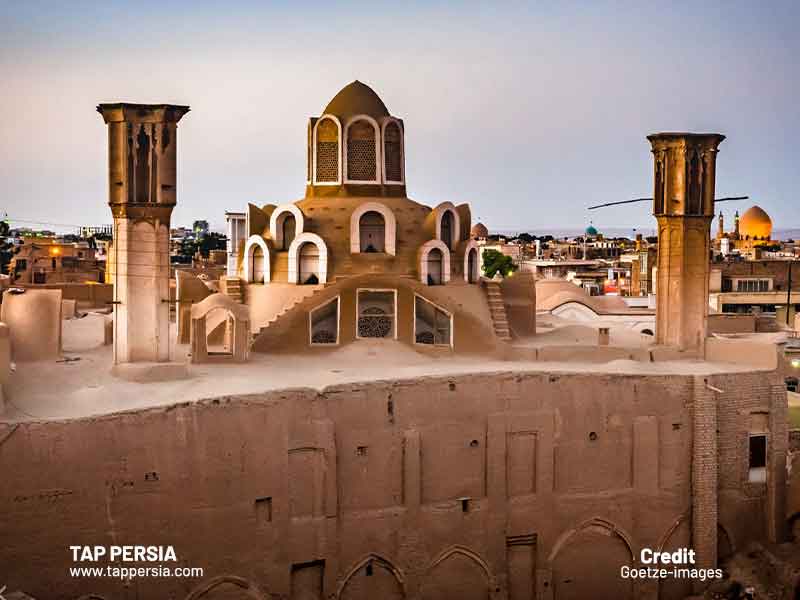
One of the greatest Kashan tourist attractions is historical homes because of their unrivaled beauty. One such ancient Qajarid structure is Borujerdi House, the former home of Haj Agha Hassan Borujerdi, which is situated in the center of the Kashan historical environment. Additionally, the structure’s inside and exterior portions both have amazing ornamentation.
The legendary Iranian painter and founder of Iran’s first painting school, Kamal ol-Molk, therefore oversaw the inside decoration of the home with priceless paintings and decorations. On the other hand, there are certain external design elements that remind people of Gaudi’s Barcelona-area structures. The structure also has many spaces such as the main hall, summer hall, porch, and wind catchers that are 40 meters high.
13.Agha Bozorg Mosque
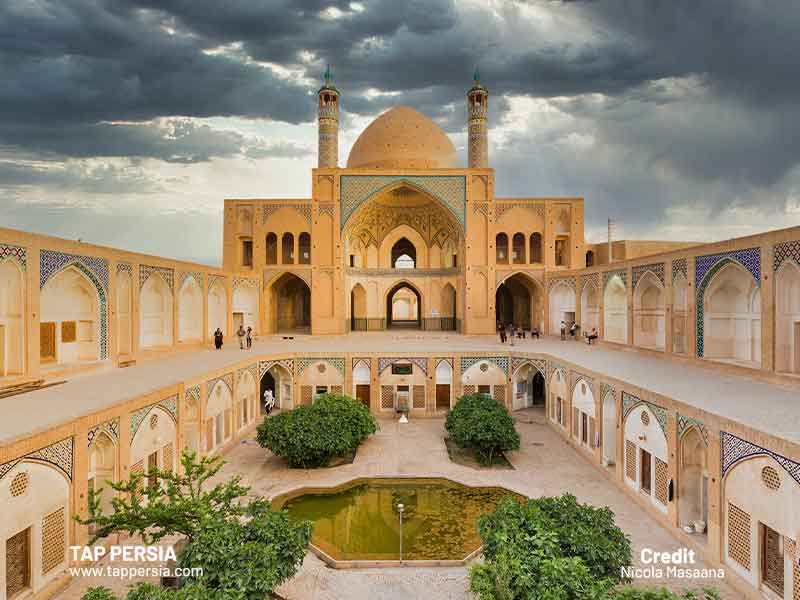
The Agha Bozorg Mosque is one of the most popular Kashan tourist attractions. For instance, the Agha Bozorg Mosque, which is situated in the same-named lane, is one of Kashan’s most impressive areas of interest. As a result, the structure houses a sizable mosque and educational facility that is utilized by students of religious sciences. Additionally, the complex dates back to the 19th century Qajar dynasty.
Additionally, this mosque is one of Kashan’s main tourist destinations thanks to its exquisite plasterwork, stunning tilework, and Muqarnas. The Agha Bozorg Mosque is the only five-story mosque in existence.
14.Underground City of Nushabad
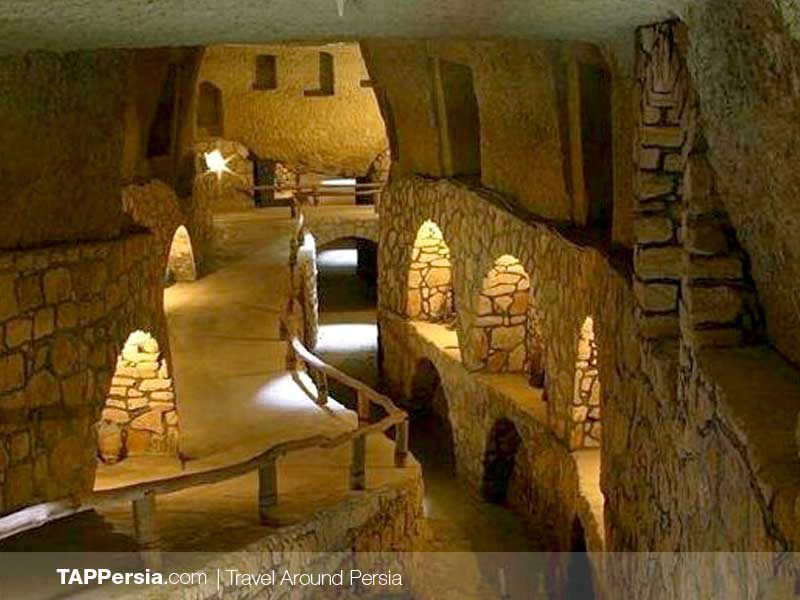
A Sassanid monarch drank some water while traveling about 1500 years ago. He gave the order to develop a city there because he liked how cold and clear the water was. He gave the city the name Noushabad, which translates to “the town of drinking water.” Nushabad is a subterranean metropolis with a complex ventilation system, several entrances and exits, and preparation for all defensive requirements. Notably, it is the world’s biggest historical underground city. The Nushabad underground city, one of the most important tourist destinations in Kashan, is drawn to by all the aforementioned characteristics. Don’t forget to try the local Noushabad coffee, known as “Anooshe,” when visiting this ancient site.
15.Dashte Kavir (Salt Desert)
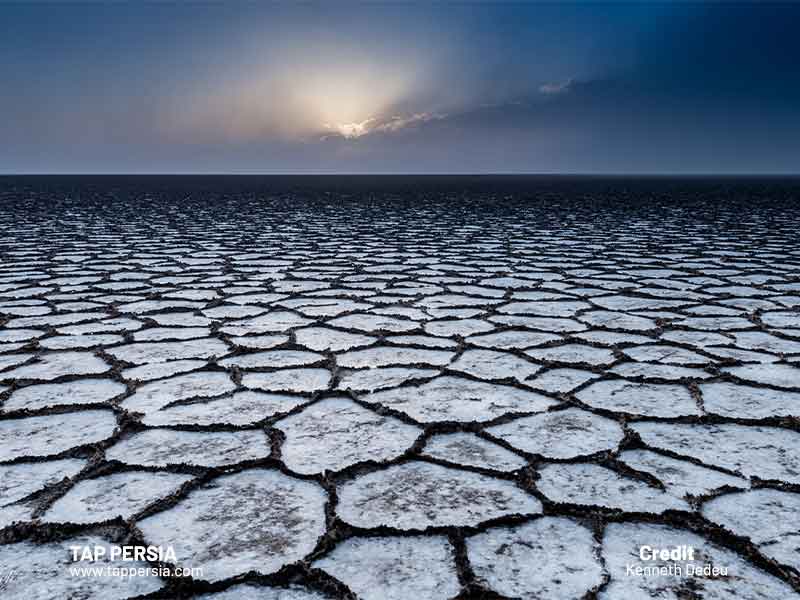
The Iranian plateau’s Dasht-e Kavir, commonly known as the Great Salt Desert, is a sizable desert that is located about 300 kilometers to the east-southeast of Tehran. The desert, which is made mostly of mud and salt marshes, is around 800 kilometers long and 320 kilometers broad (kavirs). This area was once covered by a salty ocean that encircled a tiny portion of the present-day Iranian central plateau tens of millions of years ago. As the ocean dried up, a coating of salt up to 6–7 kilometers thick was left behind.
The salt layer was eventually covered by a substantial amount of mud. But compared to the layer of mud and boulders that it was buried behind, salt has a relatively low density. As a result, it began to push through the underlying silt; over millions of years, the salt ultimately burst through and produced domes. Most likely one of the greatest instances of this geological occurrence is the salt domes of Dasht-e Kavir.



Comment (0)